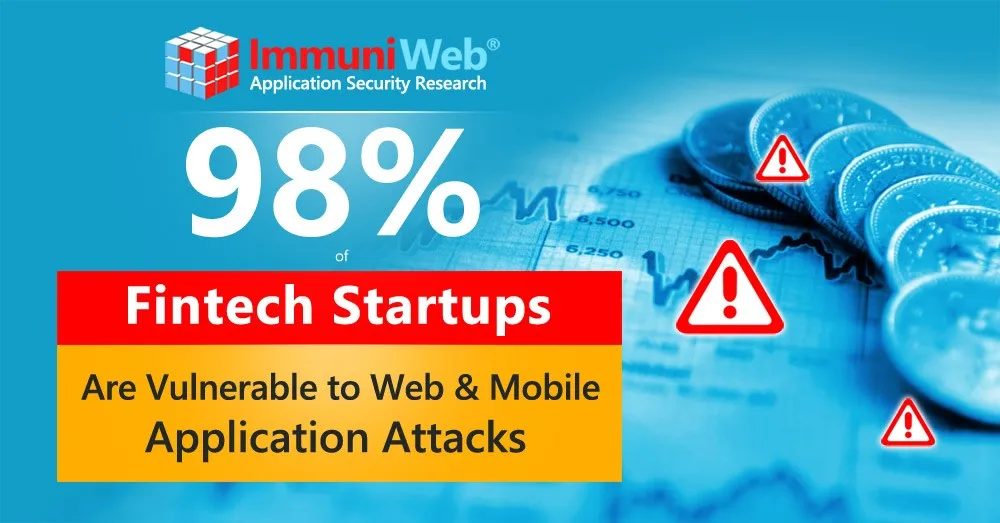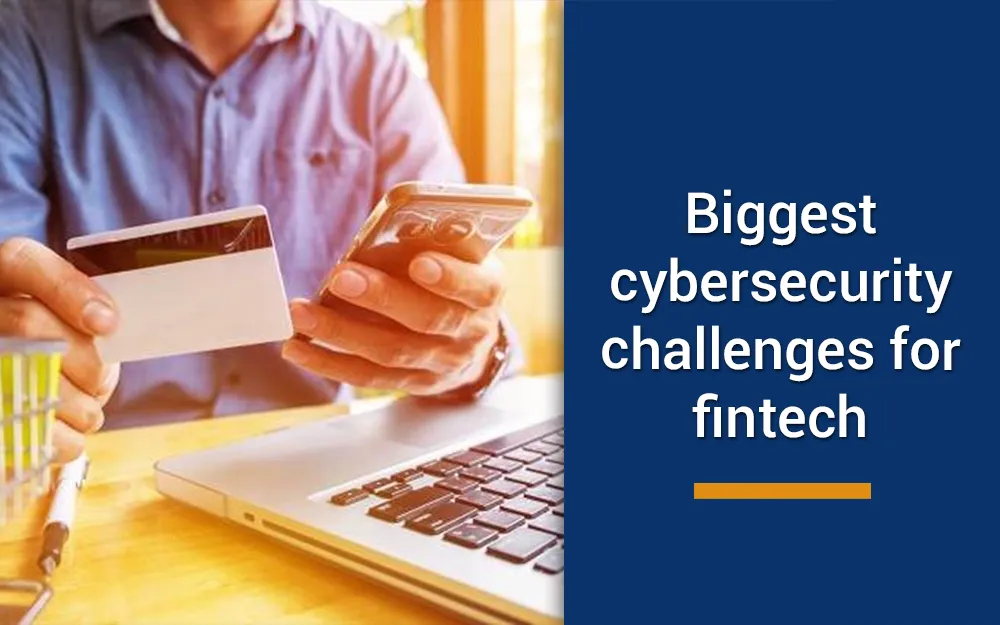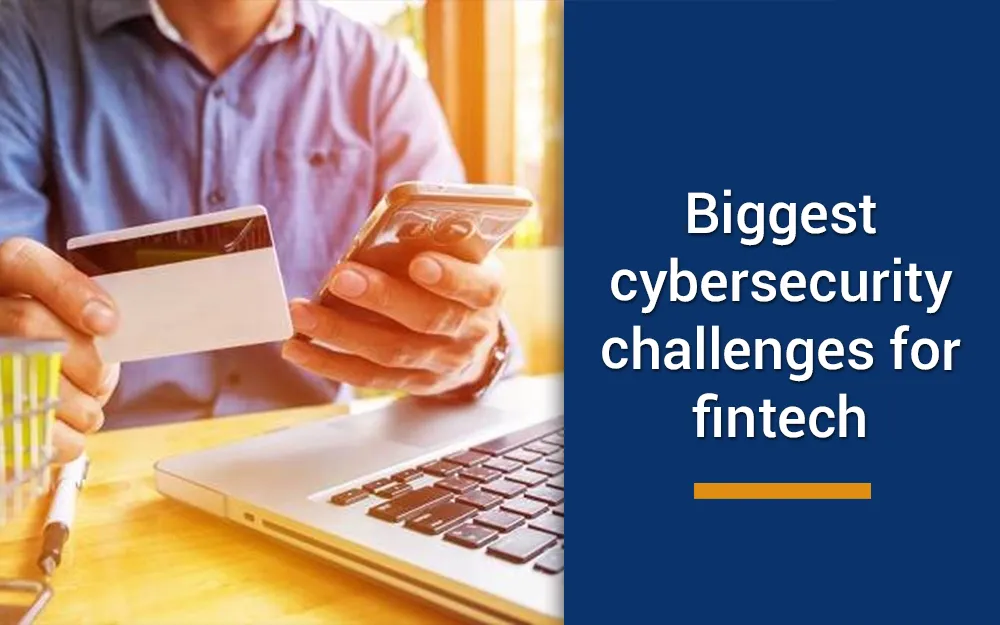Financial technology (fintech) has completely revolutionized the traditional financial services industry in the last few years. However, the adoption of the latest technologies has brought several cybersecurity challenges for fintech industry.
Banks and other financial services organizations started the use of fintech services to improve their processes, which were typically very difficult to deal with. For instance, the fintech solutions can enable investment, money transfer, lending and personal finance, right from smartphones or desktop devices.
Related read: How COVID-19 reinforced the importance of Business Continuity Planning?

Cybersecurity landscape in fintech
Cybersecurity is a big challenge for almost every sector today, as the number of cyberattacks continues to rise despite the implementation of best data security practices.
“Financial services firms are 300 times as likely as other companies to be targeted by a cyberattack—and dealing with those attacks and their aftermath carries a higher cost for banks and wealth managers than for any other sector.”
—BCG Report
Hackers and cybercriminals have got advanced today and are able to carry out sophisticated cyberattacks, including ransomware and Distributed Denial of Service (DDoS) to gain access to confidential data. They are always looking for human error and the use of outdated and vulnerable technologies to find loopholes and carry out an attack.
As fintech enterprises struggle to protect themselves from cyberthreats, it’s crucial for them to use the right cyber protection and data security services.
Scary fintech cybersecurity risks and statistics
According to research by ImmuniWeb, 98% of the top 100 global fintech startups are vulnerable to major cyberattacks, including phishing, app security attacks on mobile and web, etc.

As per the same report, following are the key stats showing cybersecurity risks in fintech sector:
- 100% of the fintech enterprises had some security or privacy issues associated with web apps, APIs, and subdomains.
- Both main websites and subdomains included some form of cybersecurity risk because of publicly disclosed or exploitable vulnerability.
- Cross-site scripting (XSS), sensitive data exposure, and security misconfiguration are the main website vulnerabilities.
- All the mobile apps in the fintech had at least one security vulnerability.
- More than 50% of the mobile apps had misconfigurations or privacy issues at the backend.
What are the top cybersecurity challenges for fintech industry?
The financial services organizations handle confidential data of businesses and individuals. The adoption of fintech has brought a massive amount of data to digital formats. While digitally available data makes it easier to analyze and get insights, it also brings several cybersecurity challenges for fintech.
Following are a few of the biggest cybersecurity challenges for fintech enterprises and startups:
1. Consequent data security
When a large number of financial services are going digital, it becomes challenging for businesses to maintain data universality and data security, right from the time of collecting the data to storing it.
With the rise in the usage of net banking and mobile banking solutions, fintech enterprises have massive amounts of user data to handle. This data includes personal information, contact details, financial information, as well as health data. The aim of collecting this data is to use it further for analysis and generate insights related to customer purchase patterns. It helps to build strategies to acquire more customers and retain them effectively.

However, the collection of data is one thing and maintaining its security at all levels is another. The personal, financial, and health data are very confidential. Protection of this data and information is still one of the biggest privacy and cybersecurity challenges for fintech enterprises. There is a need for the right data protection solution that can enable active protection against ransomware and other modern cyber threats.
2. Sharing of data
Another thing that has made it easier for consumers to get better services and products at lower prices is the collaboration between traditional financial organizations and digitally transformed financial enterprises. The backbone of such collaborations is the sharing of data in a seamless manner.

Since the data model of the traditional businesses is different from the digitally transformed businesses, there is a need for stronger mechanisms to seek the consent of consumers for data sharing. Without the right mechanisms in place, the data remains at the risk of getting misused or exploited in the grey market. Fintech businesses need to use modern technologies and processes to encrypt the data during the entire life cycle.
3. Management of digital identities
Management of digital identities of the consumers and businesses is a key challenge for the fintech enterprises. The digital identities are increasingly being used nowadays to enable an integrated and omnichannel experience for the users.
Banks and other financial institutions power their mobile apps and other equipment with biometric sensors like fingerprint scanners to authenticate the users and enable authorized access to services. Apart from biometrics, mobile apps use one-time passwords (OTPs) and code-generating apps for user authentication. These practices are more secure than conventional screen patterns, passwords, and PINs.

While the use of digital identities has strengthened the level of fintech cybersecurity, at the same time, it has become complicated to clone and manage all these identities. This is because a high number of unique OTPs are needed to be generated every day for user authentication, and a large number of unique digital identities are needed to be stored securely.
In events of cyberattacks, if these identities are stolen, the attackers can access the confidential data and steal huge sums from consumers’ accounts. Fintech enterprises must use reliable and patented data backup and disaster recovery services powered by modern technologies like cloud, artificial intelligence (AI), and machine learning.
4. Cross-platform malware infection
Fintech enterprises use multiple digital platforms for distinct purposes, such as cloud services from one vendor, and website essentials from another vendor. It is possible for hackers to develop malware to infect one platform and then propagate that malware from one platform to another. This is called cross-platform malware infection, which is a big cybersecurity risk for fintech.
Moreover, not all the systems are developed with the same level of cybersecurity and do not exhibit the same compliance models. One vendor might be using traditional and outdated technologies, while another might be using modern and reliable technologies. This can not only cause cybersecurity risks, but also bring compatibility issues.

For cybersecurity, businesses need to avoid their reliance on multiple vendors. For instance, only a one-stop solution should be used that can protect the data, backup data to the cloud or other remote places, recover the data instantly in cases of disasters, and that is compatible with several systems and technologies. Acronis is one such data backup and disaster recovery solution which is compatible with more than 20 services and products from different vendors. It can enable data protection, file sync and share, recovery, monitoring, backup to the cloud and on-premise datacenters, and much more.
5. Cloud-based security risks
Most of the digital services are today powered by cloud computing. In the financial services industry, cloud services are one of the most used services for digital transformation. The payment gateways, digital wallets, mobile apps, and websites use cloud-based services for scalability, security, speed, and many other benefits.
However, it is important to opt for a reliable cloud service provider, who can offer secure and customized cloud solutions. Use of inefficient and cheap cloud services can cost big to banks and financial institutions.
Wrapping up:
These are the main cybersecurity risks for fintech sector today. As the enterprises in this industry adopt more computing power and increase the use of digital services, it is important to get over the traditional security models and take into account the latest trends and solutions.
Going forward, the use of right cyber protection and data security solutions will play a crucial role in fintech to get rid of these challenges and win consumer trust. The time to act is now!

